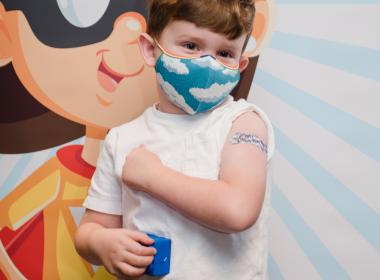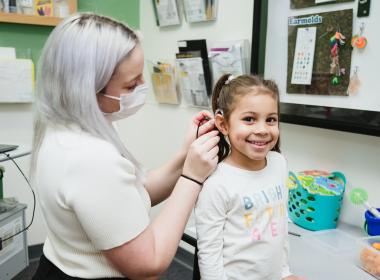Agitation Acute agitation in the hospital setting can be dangerous and highly distressing for patients, families, and staff. Further, it can result in disruption of care, injury, and need for chemical or physical restraint. Management of agitation requires understanding of its etiology and
Antenatal Risk of Coarctation of the Aorta (ARCH) Clinical Pathway Coarctation of the aorta can develop as the ductus arteriosus closes after delivery. Because the ductus arteriosus is open in utero, diagnosis prenatally can be challenging. Coarctation of the aorta can never be completely ruled out in the presence of a patent ductus arteriosus
Blunt Liver and Spleen Injury Clinical Pathway Blunt abdominal trauma causing liver and/or spleen injury is one of the most common indications for hospital admission for injured children. In 2012, a pediatric trauma consortium, ATOMAC, developed a practice management guideline for blunt liver or spleen injury that is evidence
Brachial Plexus Palsy Management Clinical Pathway Brachial plexus palsies occur in about one in 1000 live births. Older literature quotes over 90% rate of recovery, however “recovery” has a broad definition that includes any reanimation of the limb. Recognizing secondary weakness and deformity, the actual recovery rate is closer
Evaluation and Management of Suspected Clostridioides difficile (C. difficile) Infection Clinical Pathway Clostridioides difficile is a significant infection that is becoming more common in children. Although most episodes can be treated with initial empiric first line therapies, some patients should receive a pre-emptive escalation of therapy. Further, when recurrence becomes an
Skin and Soft Tissue Infection Clinical Pathway Over the years, the increase in resistance to typical antibiotics has changed the approach to the management of skin and soft tissue infections (SSTIs) in children. In 2014, the Infectious Disease Society of America (IDSA) updated their SSTIs guidelines. Based on these changes
North Hartford Ascend The North Hartford Ascend is a cradle-to-career effort to ensure children living in the North Hartford Promise Zone – which includes the Clay Arsenal, Northeast, and Upper Albany neighborhoods – have the support they need to reach their full potential. Connecticut Children’s
Article
FAQs: The COVID-19 Vaccine for Kids Ages 5 to 11 By John R. Schreiber, MD, MPH: This post was last updated May 18, 2022 Children aged 5 to 11 can get the Pfizer-BioNTech’s COVID-19 vaccine because experts for the CDC unanimously approved its use. Connecticut Children’s infectious disease expert John R. Schreiber, MD, MPH , answers common questions about the
Article
5 Tips for Parents of Kids With Hearing Loss By Christopher Grindle, MD: This article was originally published in July 2022 and last updated for accuracy in December 2023. If your child falls into the 15% of kids between 6 and 10 years old who experience hearing loss (according to the CDC), you may be wondering what you can do to help them overcome
Eating Disorder Clinical Pathway Eating disorders are increasingly prevalent in pediatrics and represent a complex interaction between medical and psychiatric manifestations. The need for a standardized approach is critical, due to the high risk of the condition (eating disorders have the highest mortality of
Article
Mastermind Advisor Spotlight: Scott Orsey Research shows 90% of children’s health is driven by the complex interplay between social, behavioral, environmental, and genetic/epigenetic factors. Connecticut Children’s Childhood Prosperity Lab (the Lab) incubates and accelerates social innovations that address the social

Gastroenterology Research Connecticut Children’s is among the most active pediatric health systems in the country for basic, clinical and translational research. Our nationally recognized gastroenterologists lead and collaborate on over 25 IRB-approved studies, including NIH- and privately-funded
Neonatology Research Supported by NIH-funding and other private sources, the Division of Neonatology is improving outcomes and guiding best practices. Our team engages in basic, clinical and translational areas of investigation that include human milk, brain injury and necrotizing enterocolitis (NEC)
Article
Early Childhood: Evidence to Impact The Help Me Grow National Center is collaborating with ZERO TO THREE and the American Academy of Pediatrics to launch a new national technical assistance center aimed at strengthening early childhood systems. The Early Childhood Developmental Health Systems Evidence to Impact